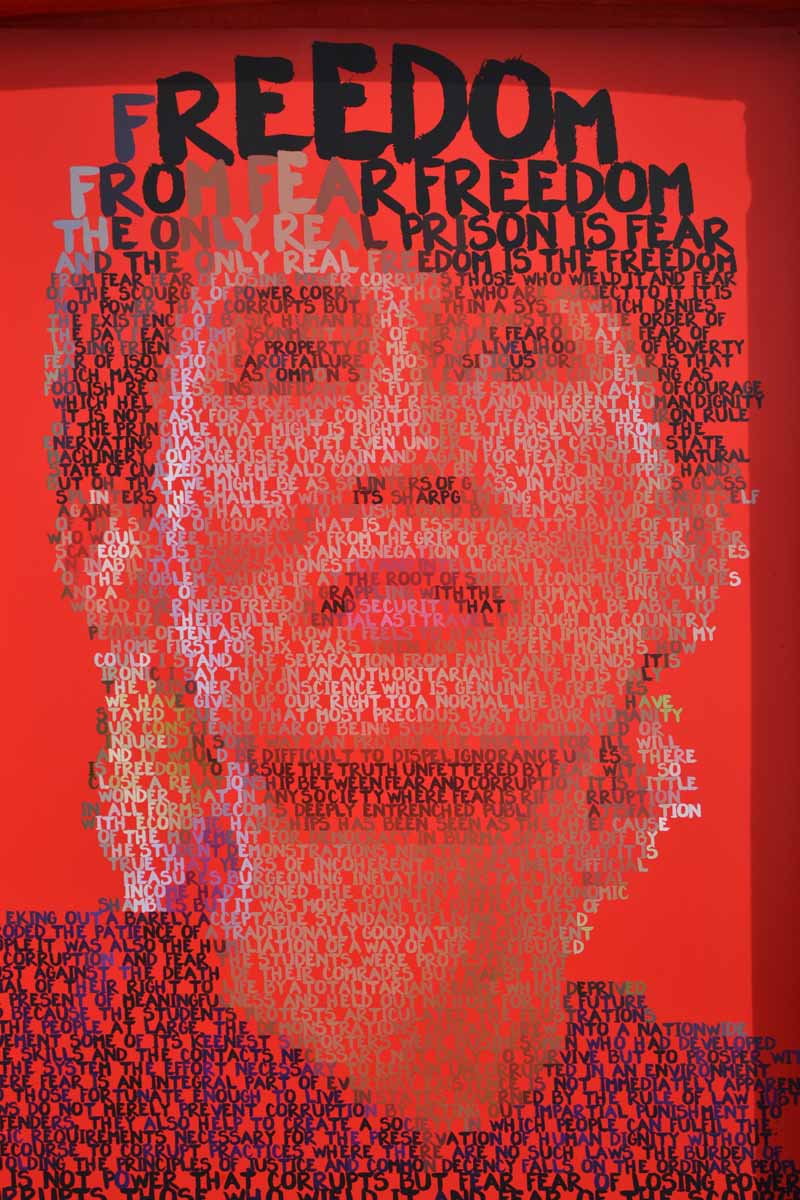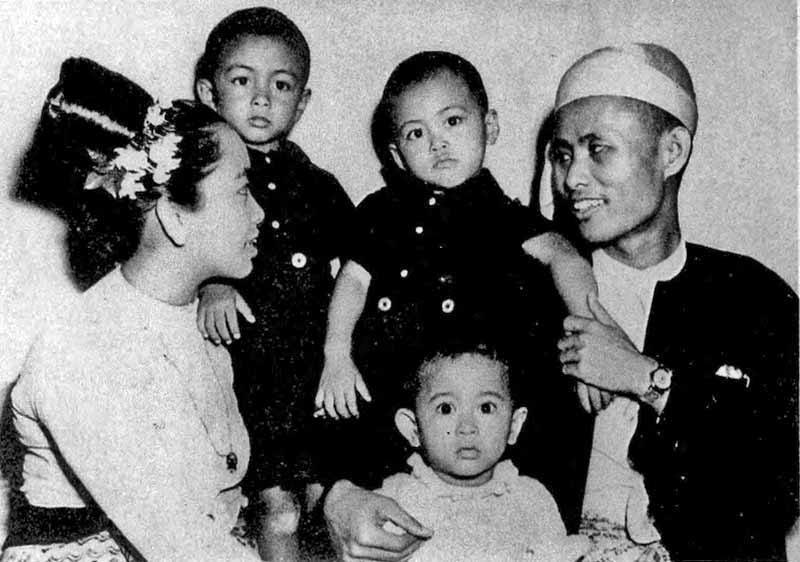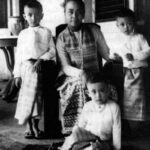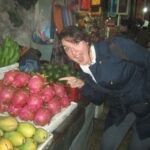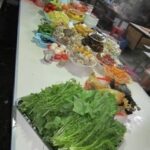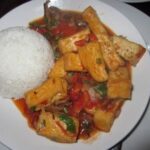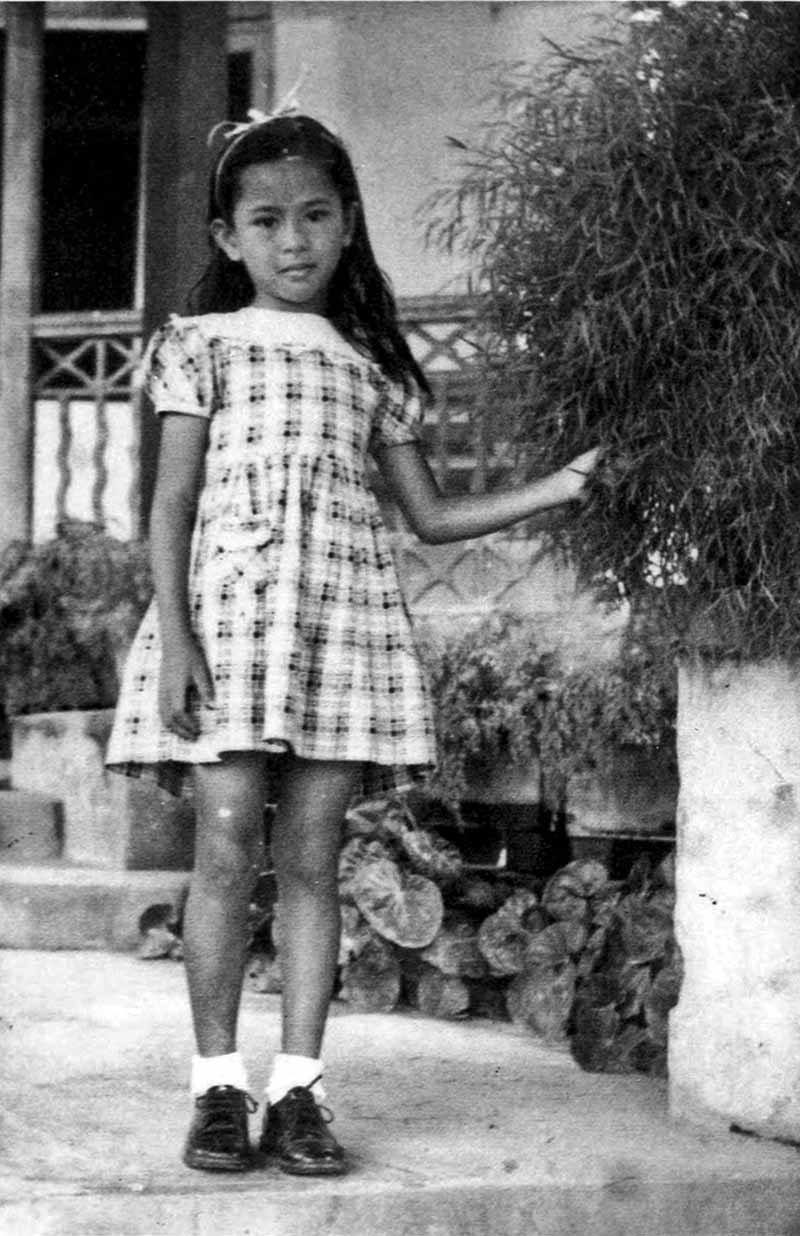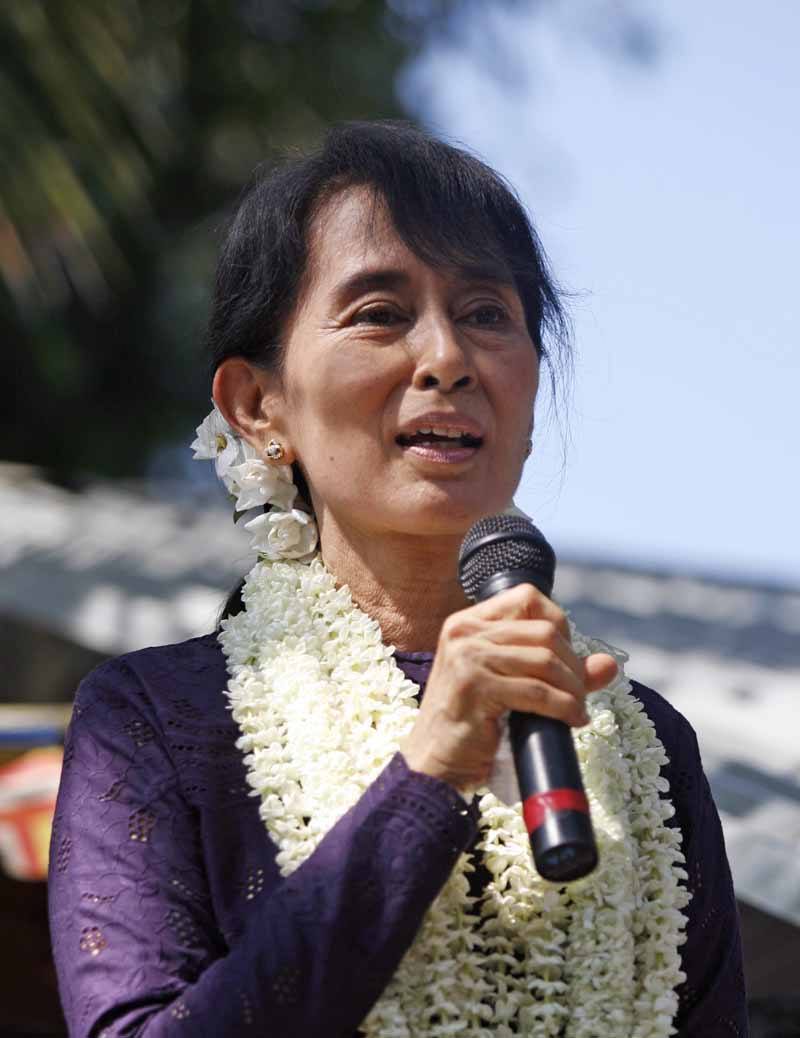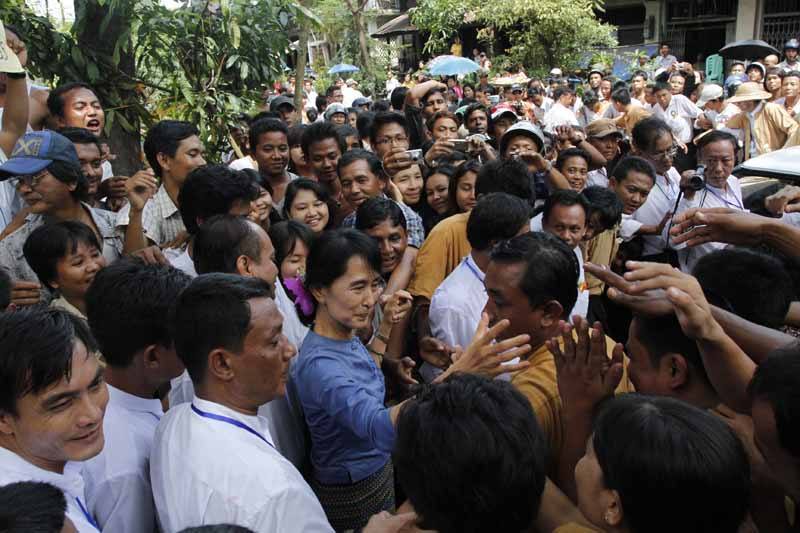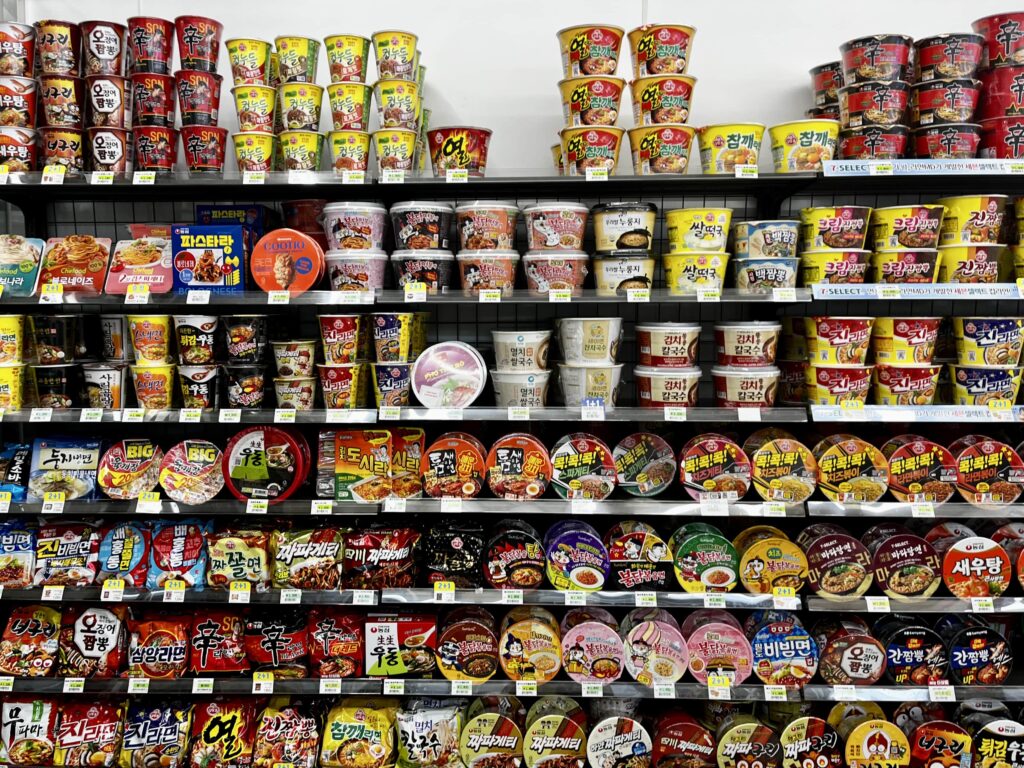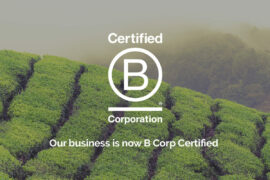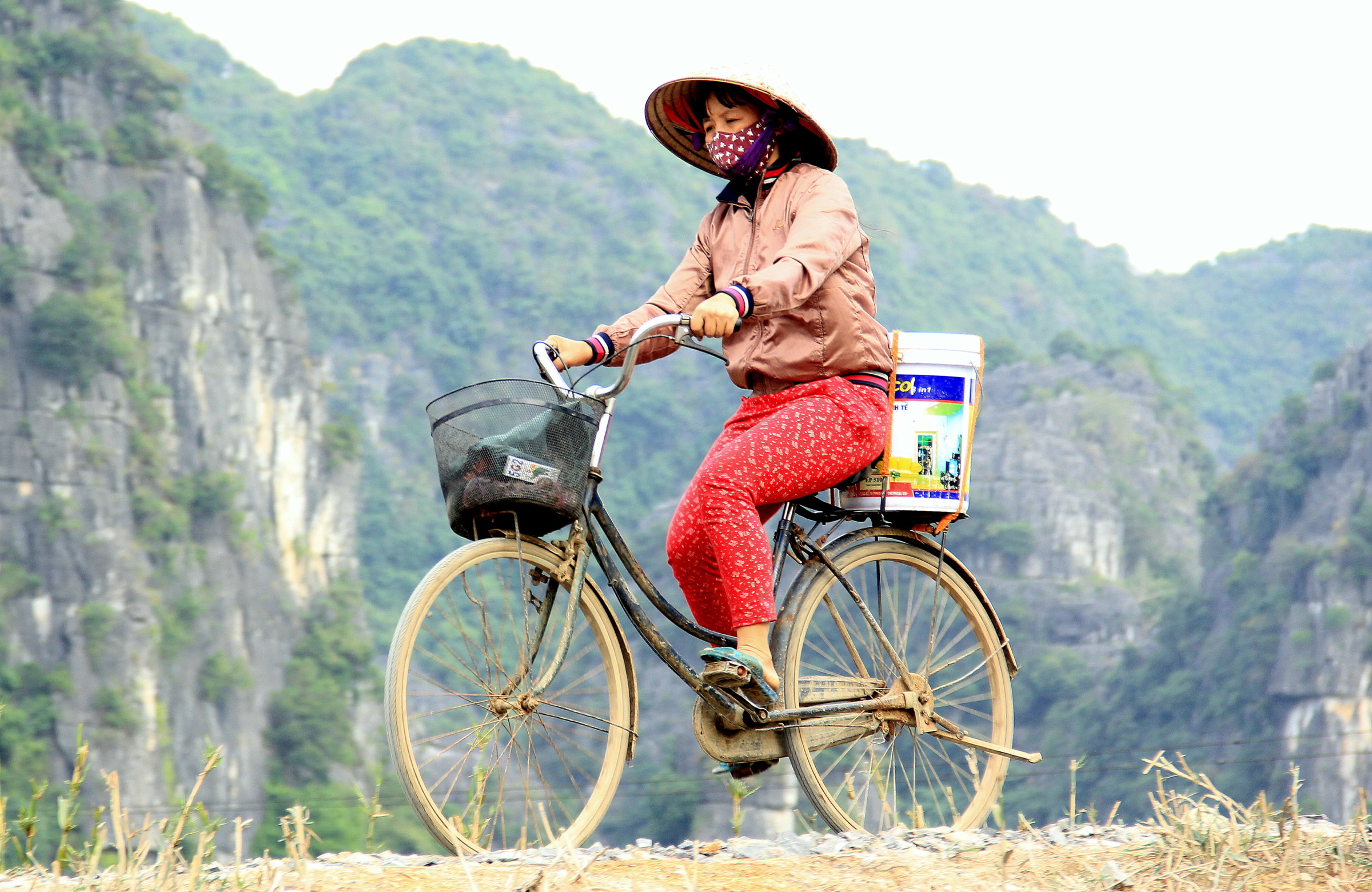By far Burma’s most famous citizen and the world’s most prominent and influential political prisoner, Aung San Suu Kyi has been a tireless defender of human rights and democracy in Burma since 1988. Now, with the announcement on the 8th of July that Burma will be holding a general election this coming November, Aung Suu Kyi’s party, the National League for Democracy (NLD), may finally be in with a shot at government – although Suu Kyi is unfortunately still barred from the top job.
In light of this momentous announcement, we thought there could be no better time for a review of the life and times of The Lady herself.
Family background
As the daughter of General Aung San, legendary revolutionary and father of modern Burma, it might be said of Aung San Suu Kyi that greatness was in her genes.
Aung San was the founder of the Communist Party of Burma and is held responsible by most for bringing about Burma’s independence from British colonial rule – although he was assassinated just months before his plans came to fruition.
Suu Kyi’s mother, Khin Kyi, was also a politician and diplomat – serving as an MP in the country’s first post-independence government from 1947 to 1948, as First Minister of Social Welfare from 1953, and as Burmese ambassador to India and Nepal from 1960. Khin Kyi was the first Burmese woman ever to serve as the head of a diplomatic mission, and her funeral in Rangoon in 1988 was attended by over 200,000 people.
Early life
Aung San Suu Kyi was born in 1945 in Rangoon (now Yangon), where she was educated at an English High School and showed an early aptitude for learning languages. When her mother became the Burmese Ambassador to India and Nepal, she moved to New Delhi – where she gained a degree in politics from Lady Shri Ram College before moving to England to study for a BA in Philosophy, Politics and Economics at St. Hugh’s College Oxford.
In 1972, Suu Kyi married Michael Aris – a British author, Buddhism expert and scholar of Bhutanese, Tibetan and Himalayan culture. The couple lived in North Oxford, where they raised their two sons Alexander and Kim until Suu Kyi returned to Burma in 1988 to care for her elderly mother.
Return to Burma
The same year that Suu Kyi returned to Burma, the country’s long-time military dictator, General Ne Win, stepped down from office. This event sparked mass demonstrations for democracy, held on the 8th of August 1988 and known as the 8888 Uprising, but these were violently suppressed by the military.
Just a couple of weeks after the 8888 bloodbath, in which hundreds – if not thousands – of people died, Suu Kyi addressed a rally of half a million in front of Shwedagon Pagoda. The next month, she helped to found the National League for Democracy, of which she has been the chairperson ever since.
No sooner had Suu Kyi’s political career begun than she was placed under house arrest by the military junta – just under a year since her first public address. She was offered freedom if she gave up her political aims and left the country, but she refused out of fear that she would not be allowed to return.
1990 elections
In 1990, the military called the first general election to take place in Burma for thirty years. In the election, Suu Kyi’s party won 59% of the votes, a solid majority that should have guaranteed the party 80% of government seats, but the result was dismissed by the military and the party was never allowed to assume power. Another election would not be allowed to take place until 2010 – when the junta celebrated “victory” in an election that is widely considered to have been a sham.
House arrest
Aung San Suu Kyi would be incarcerated for a total of 15 of the 21 years following 1989, with brief periods of release in between. She largely spent her time in detention studying Buddhism, reading up on politics and philosophy, and playing the piano – but she refused at any point to flee to her family in Britain, sacrificing a life with her husband and sons to show her solidarity with the Burmese people “in the larger prison of Burma under authoritarian rule”.
Suu Kyi was placed under house arrest on three separate occasions, the first for six years, the second for 19 months, and the third for seven years. In all this time she saw her husband, Michael Aris, just five times – the last being at Christmas 1995. When he was diagnosed with terminal prostate cancer in 1997, the Burmese government refused to grant him a visa to visit the country on the grounds that they did not have the facilities to care for him, and he died on his 53rd birthday in 1999.
In 2009, Suu Kyi was charged with violating the terms of her house arrest when the American John Yettaw swam uninvited across the lake to Suu Kyi’s house, earning her 18 extra months in captivity.
Finally, on the 13th of November 2010, just six days after the junta’s Union Solidarity and Development Party won their sham election, Aung San Suu Kyi was released from house arrest for the final time and has never since been rearrested. In the same month, Suu Kyi’s son, Kim Aris, was granted a visa to visit his mother for the first time in 10 years.
The Rohingya controversy
The Lady has faced criticism recently for her failure to take a clear stance on the issue of Rohingya Muslims, who currently face persecution in Burma (see our blog post to find out more). Commentators speculate that it is due to the upcoming election that Suu Kyi has avoided making her opinions known, in the hopes of securing the support of the Burmese Bamar ethnic majority. Her position on the matter remains to be seen.
Fact file
Born: 19 June 1945
Titles: Chairwoman on the National League for Democracy (NLD) and MP for the constituency of Kawhmu
Nickname: “The Lady”
Spouse: Michael Vaillancourt Aris (1946-1999)
Children: Alexander Aris (b. 1973) AKA Myint San Aung & Kim Aris (b. 1977) AKA Htein Lin
Awards & decorations:
Rafto Prize for human rights (1990)
Sakharov Prize for Freedom of Thought (1990)
Nobel Peace Prize (1991)
Jawaharlal Nehru Award for International Understanding (1992)
International Simon Bolivar Prize (1992)
Honorary citizen of Canada (one of only four people ever to be awarded the honour)
Wallenberg Medal (awarded to outstanding humanitarians) (2011)
Presidential Medal of Freedom (highest civilian honour in the United States) (2012)
Forbes 61st most powerful woman in the world (2014)
Trivia
Suu Kyi’s son, Kim, was named after the Kipling novel of the same name. Kipling is renowned for his romantic portrayal of Burma under colonial rule, and The Lady is said to be an avid fan of his writings.
The name Aung San Suu Kyi, like most Burmese names, does not include a family name – but is a personal name comprising three different components: “Aung San” from her father, “Suu” from her paternal grandmother, and “Kyi” from her mother.
The Burmese usually refer to The Lady as “Daw Suu” or “Amay Suu”, equivalent to “Auntie Suu” or “Mother Suu”.
Suu Kyi’s older brother, Aung San Oo, is a naturalised American citizen with close links with the military junta. The pair are estranged, and Aung San Oo is thought to have collaborated with the junta in attempts to undermine his sister in the past.
Further reading & watching
Freedom from Fear – An essay by Suu Kyi, and a book of the same name comprising a collection of her essays.
Letters from Burma – A collection of letters written by Aung San Suu Kyi whilst under house arrest.
The Lady – A 2012 film by Luc Besson starring Michelle Yeoh and documenting the life & times of Aung San Suu Kyi.
[youtube https://www.youtube.com/watch?v=SMYAzQC3UjI&w=560&h=315]
